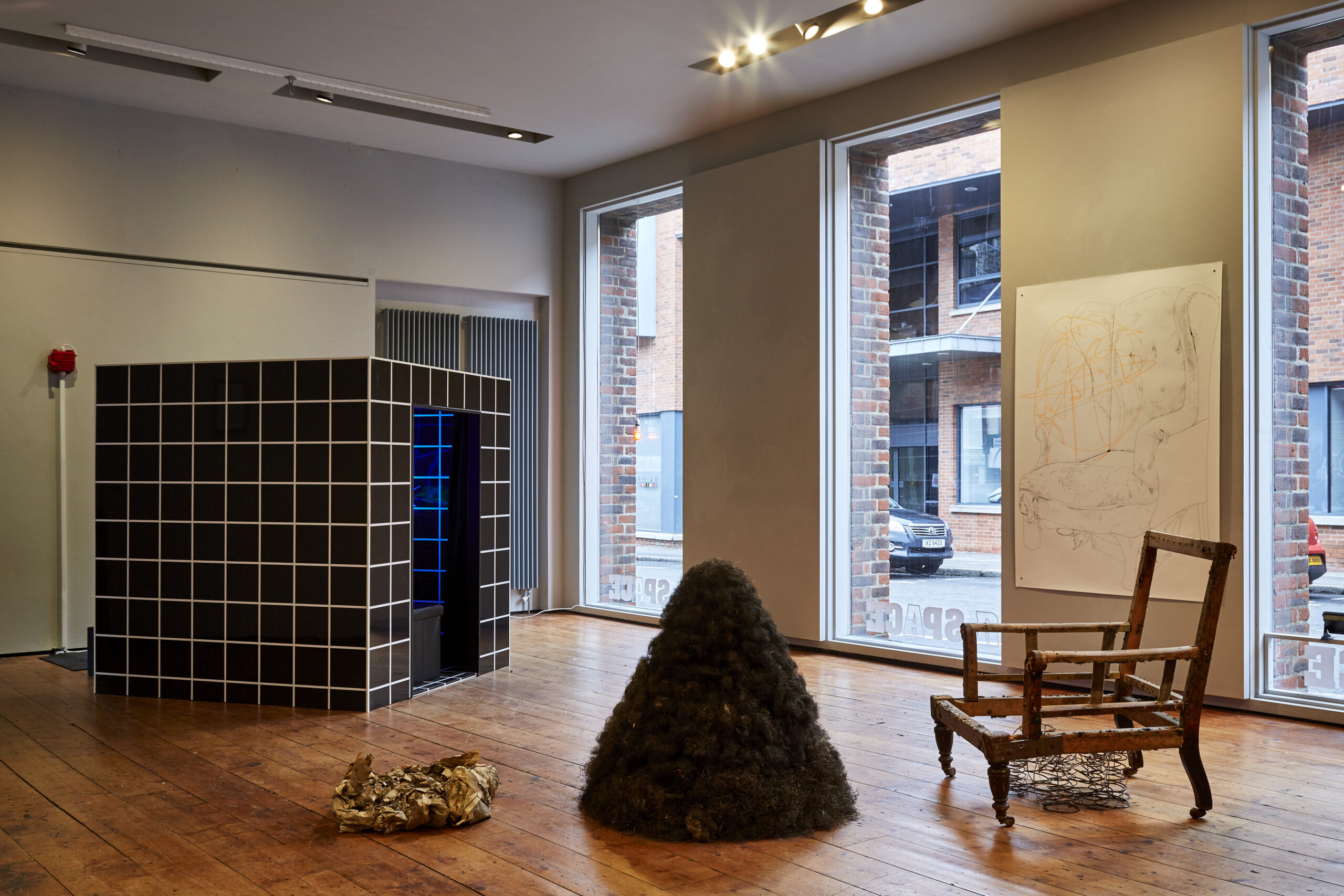Still, it’s time based
About the exhibition Breath, Breathless with artists Kevin Killen and Sally O’Dowd at R-Space in Lisburn, Northern Ireland, February – March 2017.

A house with old furniture has no need of ghosts to be haunted.
Hope Mirrlees, Lud-in-the-Mist, 1926
The invitation to Breath, Breathless, an exhibition by Kevin Killen and Sally O’Dowd defined the artists’ joint interest as “the hidden footprint of the everyday” which for me was a curious statement. I was not able to imagine what story would be told with drawing and neon lights that could reveal something about the idea of everyday life, the ever so important insignificant invisible remains of the day. I was completely wrong, the exhibition was not at all discussing this Marxist concept or any contemporary commentary about it, rather it was about the significant, visible, historical and cultural practice of every day.
Breath, Breathless was on show at R-Space Gallery in Lisburn which ran in February-March 2017. The exhibition had an opening event and a workshop as part of its artistic concept; I did not attend these so my sole engagement was with the installed aspect of this project. The exhibition offered comments on old and new aspects of domesticity and references the Linen Rooms’ past as a home. The setup, however, was not aspiring to create a sense of home. The real strength of this exhibition was to me in the artists’ ability to draw a timeline using objects in space and the movements around them. It was great to see how effectively very few objects set up in a space that had no sense of “home” to me, created a beat and a kinetic energy that certainly communicated the idea of home.
This kinetic energy of travelling along a timeline is, to my experience, mostly reserved to exhibitions and events that include time-based work in their programme. Within the expected suspects are moving image work and performance. In his text about the work done on Amanda Coogan: Long Now (2017) director Paddy Cahill speaks of the concentration and duration which are part of Coogan’s performances, and how these create an intimacy between the audience and the artwork. The performer’s breath is slowed down and is dedicated to the piece, and so the direct relationship developed between audience and art is a personal and social one. The relationship with film and moving image installation creates a similar (though less direct) relationship with a timeline and narrative – the audience is experiencing the timeline through engagement, they are there for the duration of the artworks unfolding.
In Breath, Breathless there were no performers, and no unfolding of a narrative to engage with or follow throughout a duration. The timeline was discussed and represented in a way so effective I have not encountered it’s like previously in an exhibition presenting objects and still artwork. The lamp and neon’s rhythmic, slow blinks managed to mimic in a way what Cahill attributed to a fully immersed performer’s breathing. Since I visited the exhibition during daylight it was perhaps less effective than it would have potentially been in a darkened room, but the sense of a timeline was certainly present in the space. The intensive repetition of housework, the history of a country family who were bakers, those stories of Irish living then and now managed to be told very clearly. The methodic relationship between the two artists’ work, using neon (pens and lights) to capture movement in domestic spaces gave a cohesive and intentional statement to where and when this art belongs.
When I received the invite to this exhibition I felt uncertain about the playful nature of the artists’ methods being able to convincingly convey historical domesticity in a way I would be able to relate to. In fact, I’m not sure the topic of domesticity was significantly present for me when engaging with this exhibition. The conceptual motif was actively and effectively threaded between the “then” and “now” and truly marked the strength of this project.
